What does summer research at Trinity College look like?
More than 125 Trinity students spent part of their summer conducting research alongside faculty members in laboratories, classrooms, conference rooms, offices, museum archives, and even Bushnell Park during the annual Greater Hartford Festival of Jazz.
Each summer, students work with faculty supervisors on research projects in a variety of disciplines. The Summer Research Program supports intensive student involvement in ongoing faculty research at Trinity during the summer. Students receive a stipend for eight to 10 weeks of research work, as well as on-campus housing. Students also are eligible to earn co-curricular credit for summer research work through the Trinity Plus Curriculum.
At the conclusion of the research period, students are required to submit a summary of their work for review. Student researchers are encouraged to present the results of their work at the College’s Fall Research Symposium in September.
Additionally, the Public Humanities Collaborative is a summer research opportunity that brings together students, faculty, and individuals and organizations in Hartford to work on public humanities: the study of how people interpret stories of the human experience. The PHC is a component of the Summer Research Program and funds between 10 and 16 students per summer.
See what summer research at Trinity looks like in the gallery below. Photos by staff photographer Nick Caito.
Summer Research at Trinity College: 2025
Summer Research at Trinity College: 2025
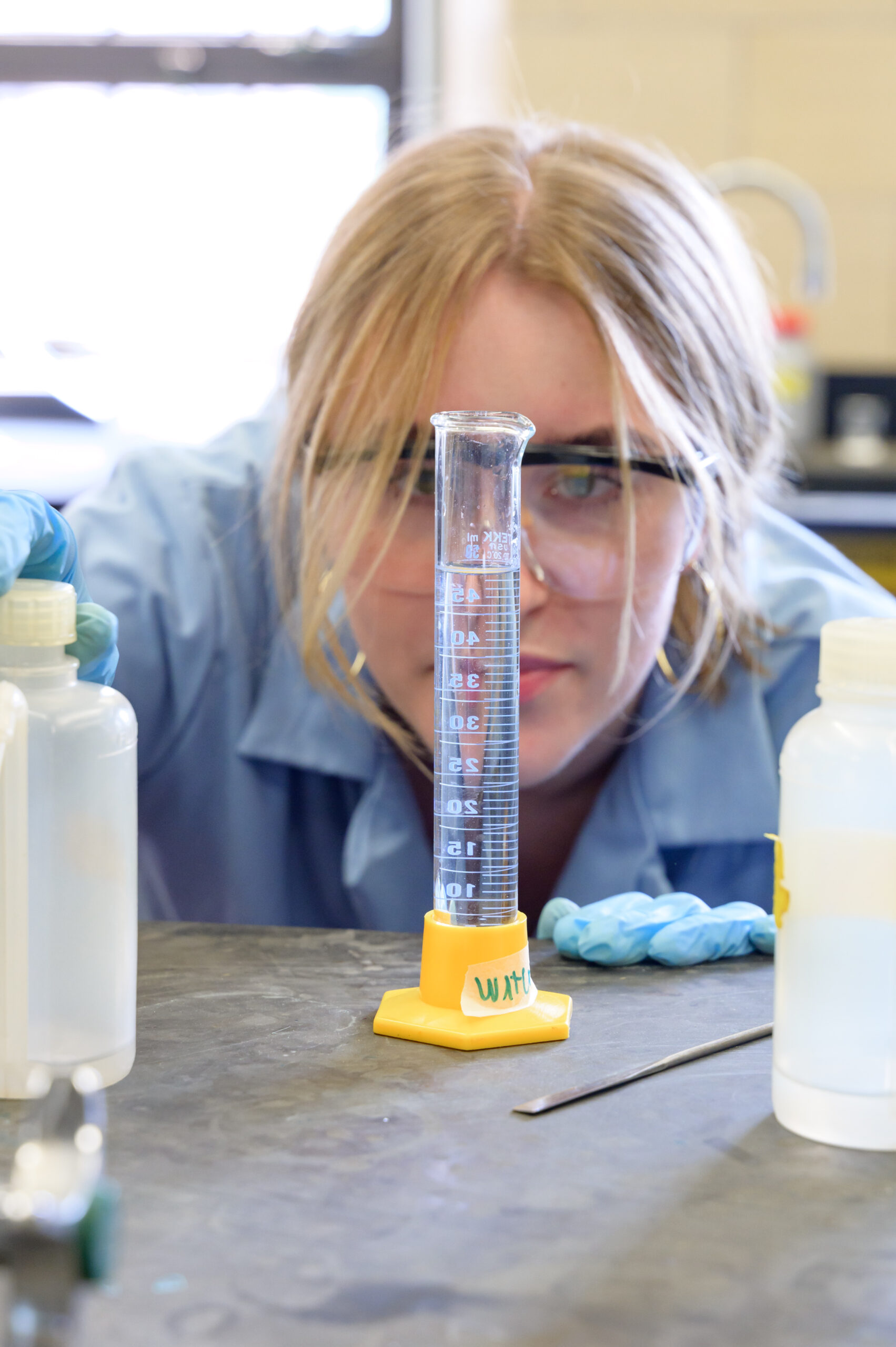
Kelsey Day ’27 examines a graduated cylinder in the lab. Working with Visiting Assistant Professor of Chemistry Virginie King, Day’s summer research project involved developing new experiments for general chemistry students to perform to help them understand chemical concepts. Photos by Nick Caito.
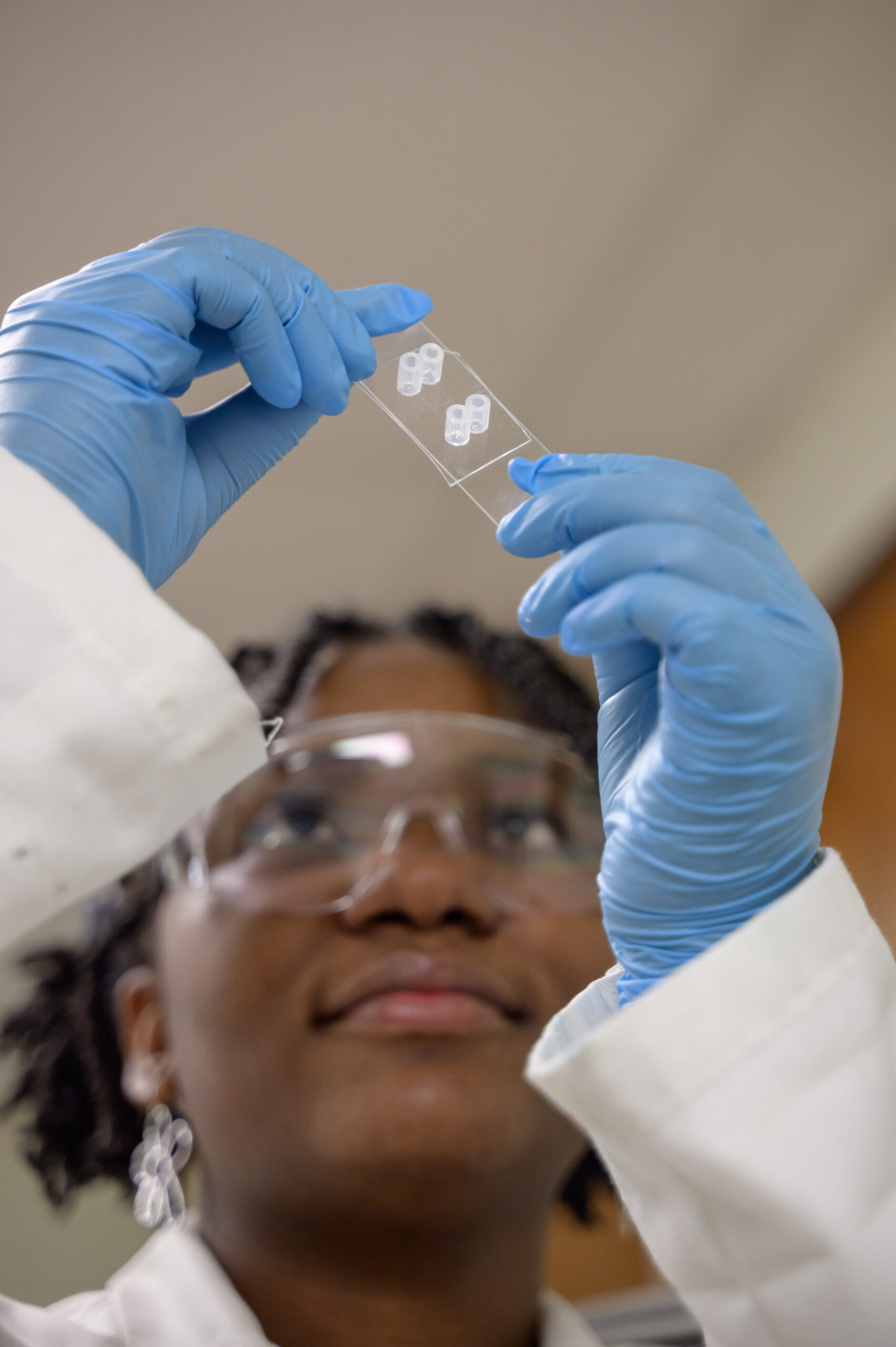
Asia Hamilton ’27 examines a slide in the lab. Her research project with Michelle Kovarik, Dr. Henry A. DePhillips, Jr. Professor of Chemistry, “Stress Response Assays in the Ciliate Tetrahymena thermophila,” involves studying how microbial cells that live in freshwater respond to electric fields. Understanding this might allow the cells to be used as living motors to move fluids in devices for chemical analysis, Kovarik said.
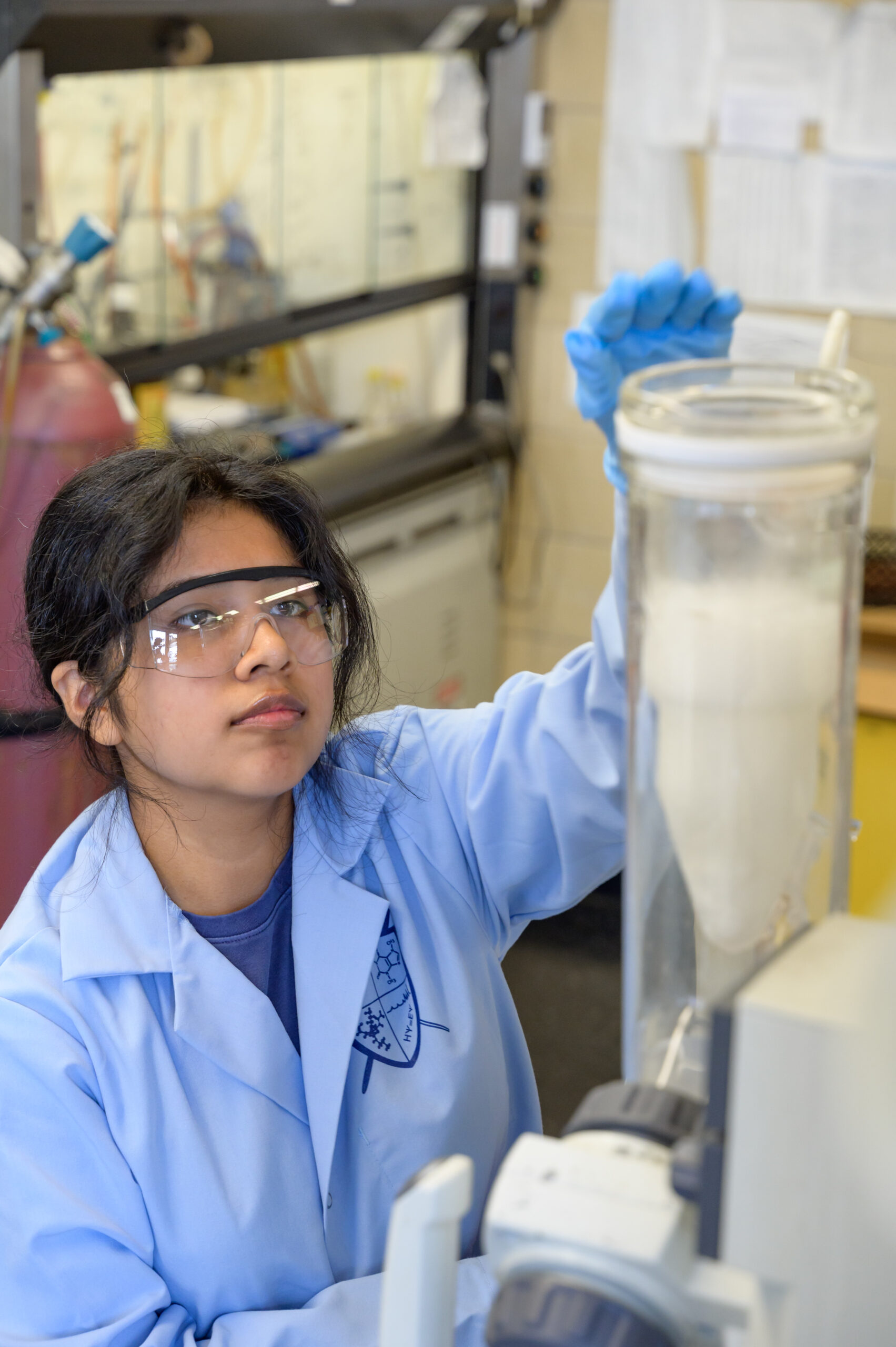
Denise Pedraza Guzman ’27 uses frozen carbon dioxide during summer research experimentation to find a new catalyst to distinguish between “right-handed” and “left-handed” molecules. The property, called chirality, is common in biological molecules. Guzman worked this summer with Cheyenne Brindle, associate professor of chemistry.
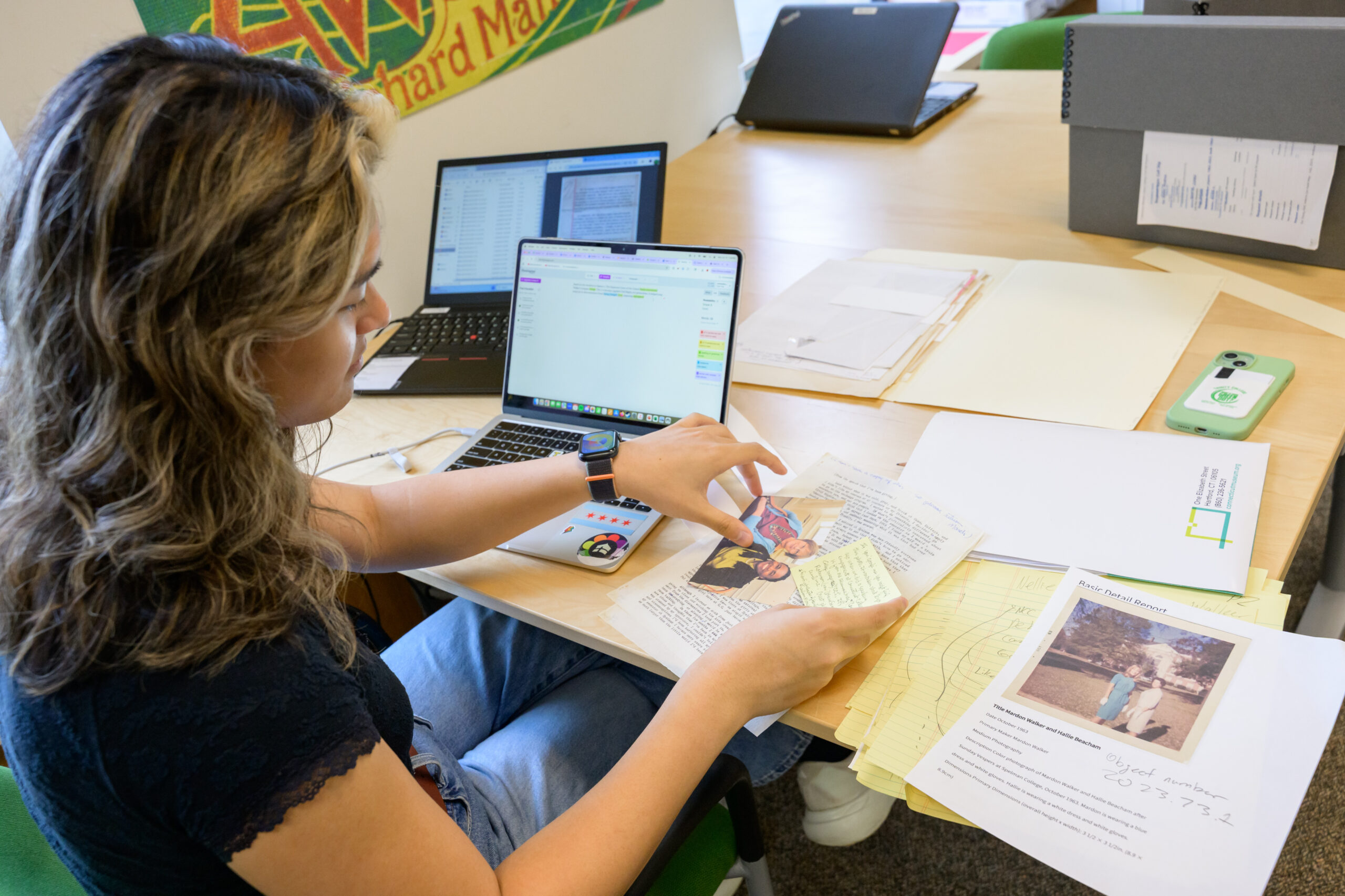
Nellie Nguyen ’27 examines documents found in the Connecticut Museum archives about the life of Connecticut civil rights activist Mardon Walker. Nguyen was part of the Public Humanities Collaborative project with Karen Li Miller, lecturer in American studies, Andrea Rapacz, chief curator of collections, Andrea Slater, Florence S. Marcy Crofut Archivist, and Sierra Dixon, Florence S. Marcy Crofut Director of the Research Center, CT Museum of Culture and History, and Ruth G. Torres, founding member of the Schaghticoke Women’s Traditional Council.
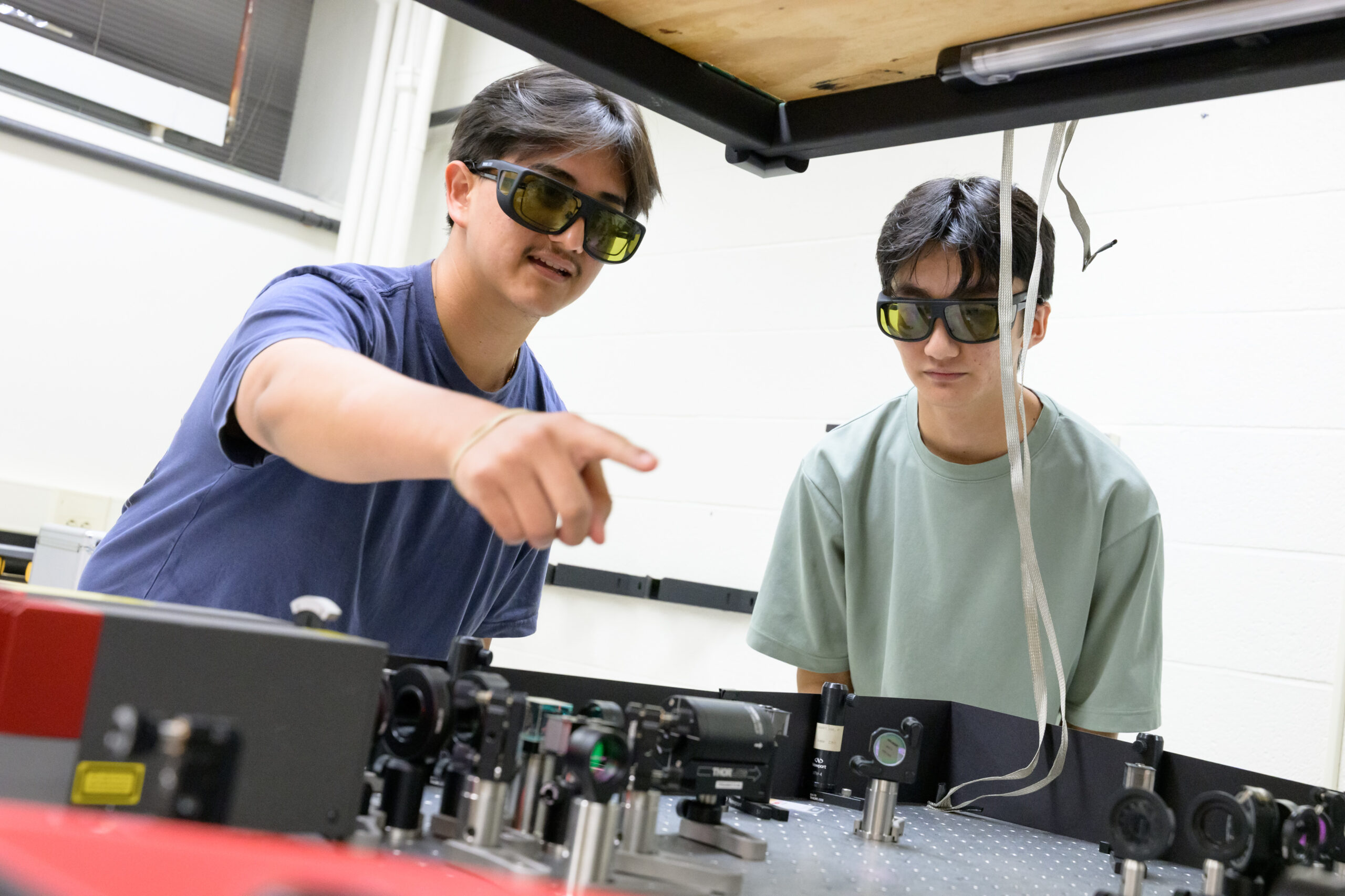
Jason Perez Mendez ’28 (left) and Pema Wangchuk ’28 work on assembling a laser interferometer similar to the LIGO gravitational wave detector, but on a smaller scale. Their work was supervised by Eyal Schwartz, assistant professor of physics.
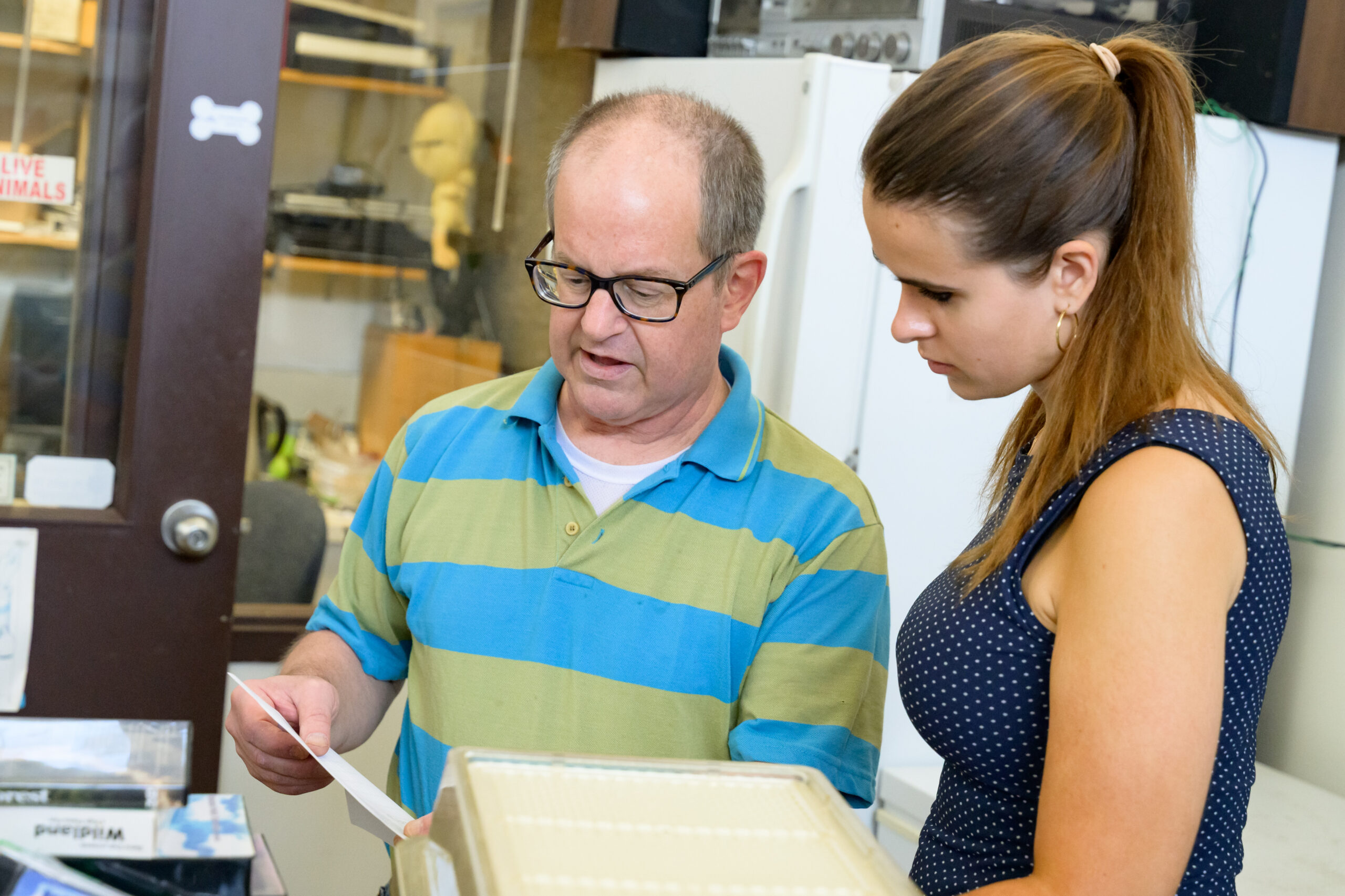
Zoe Kuehne ’26 reviews experiment procedures and data with Research Associate Professor David Ruskin. Kuehne worked with several other students examining adenosine in mice and how the compound affects everything from motor skills to addictive behavior.
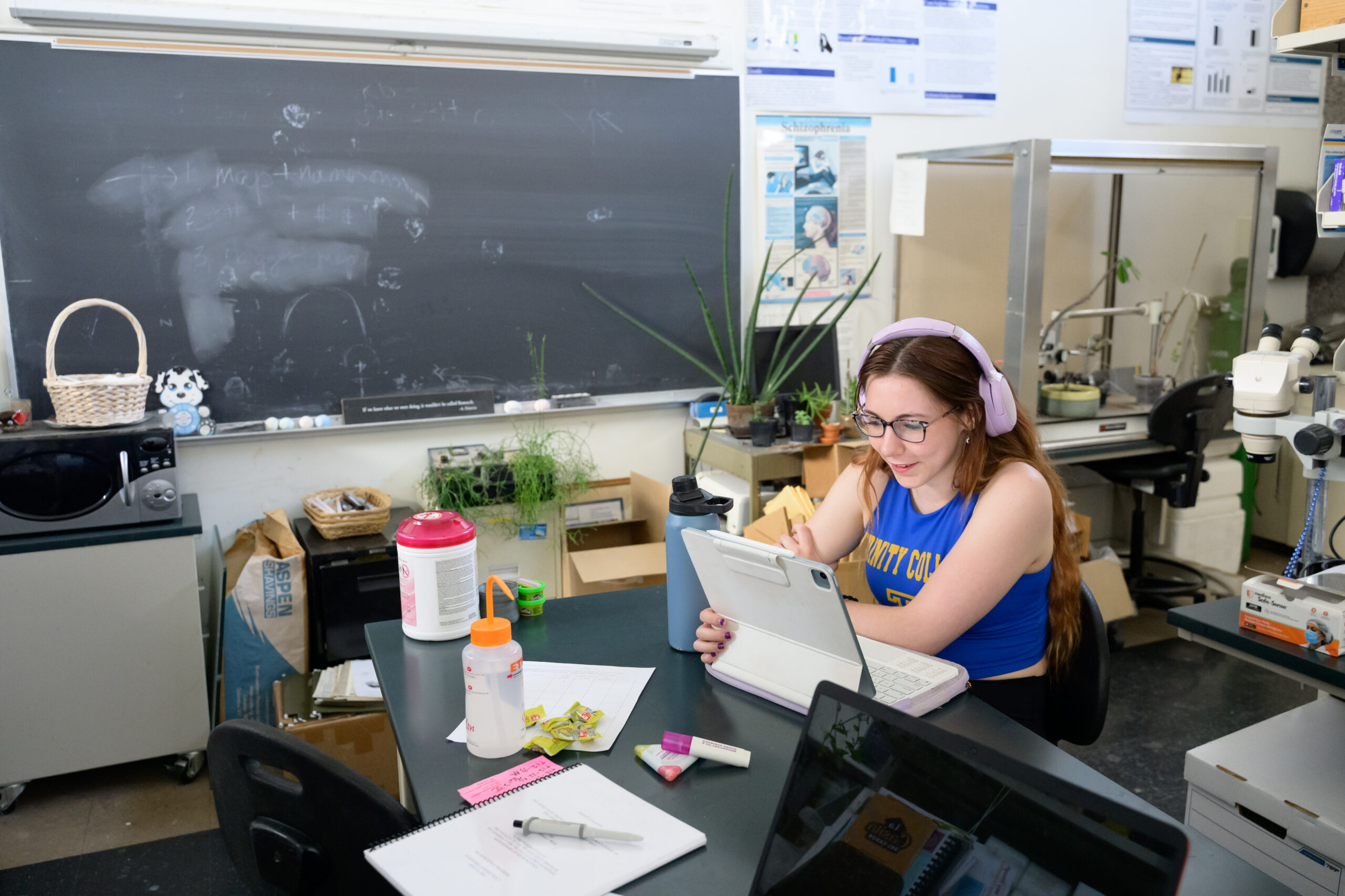
Maggie Terpeny ’28 prepares for experiments on how drug use affects motor skills in mice with different genetic predispositions. Terpeny worked this summer on research with Research Associate Professor David Ruskin.
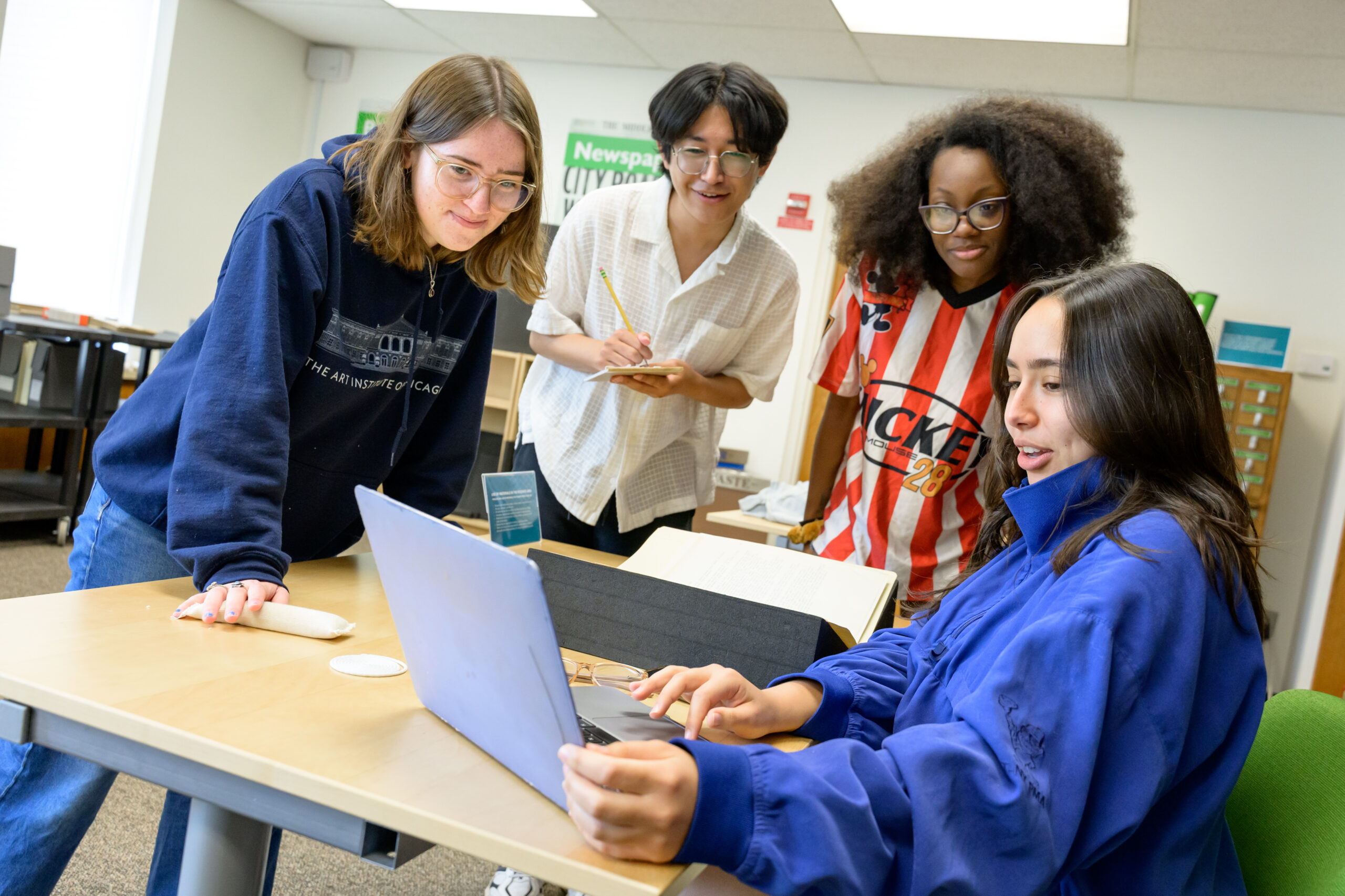
(Left to right) Celia Lanza ’26, Sabin Limbu ’27, Kayla Houston ’27, and Gabriela Scavenius ’27 review archival collections at the Connecticut Museum of Culture and History as part of their summer research project examining how a trash incinerator in Hartford’s South End and its subsequent closure affected the local community. The project is a component of the Urban Environmental Justice in Greater Hartford grant funded by the Andrew W. Mellon Foundation and is a research collaboration between Trinity College’s Center for Hartford Engagement & Research, Center for Caribbean Studies, and Center for Urban and Global Studies, with community partners at the Center for Leadership & Justice and the Stowe Center for Literary Activism.
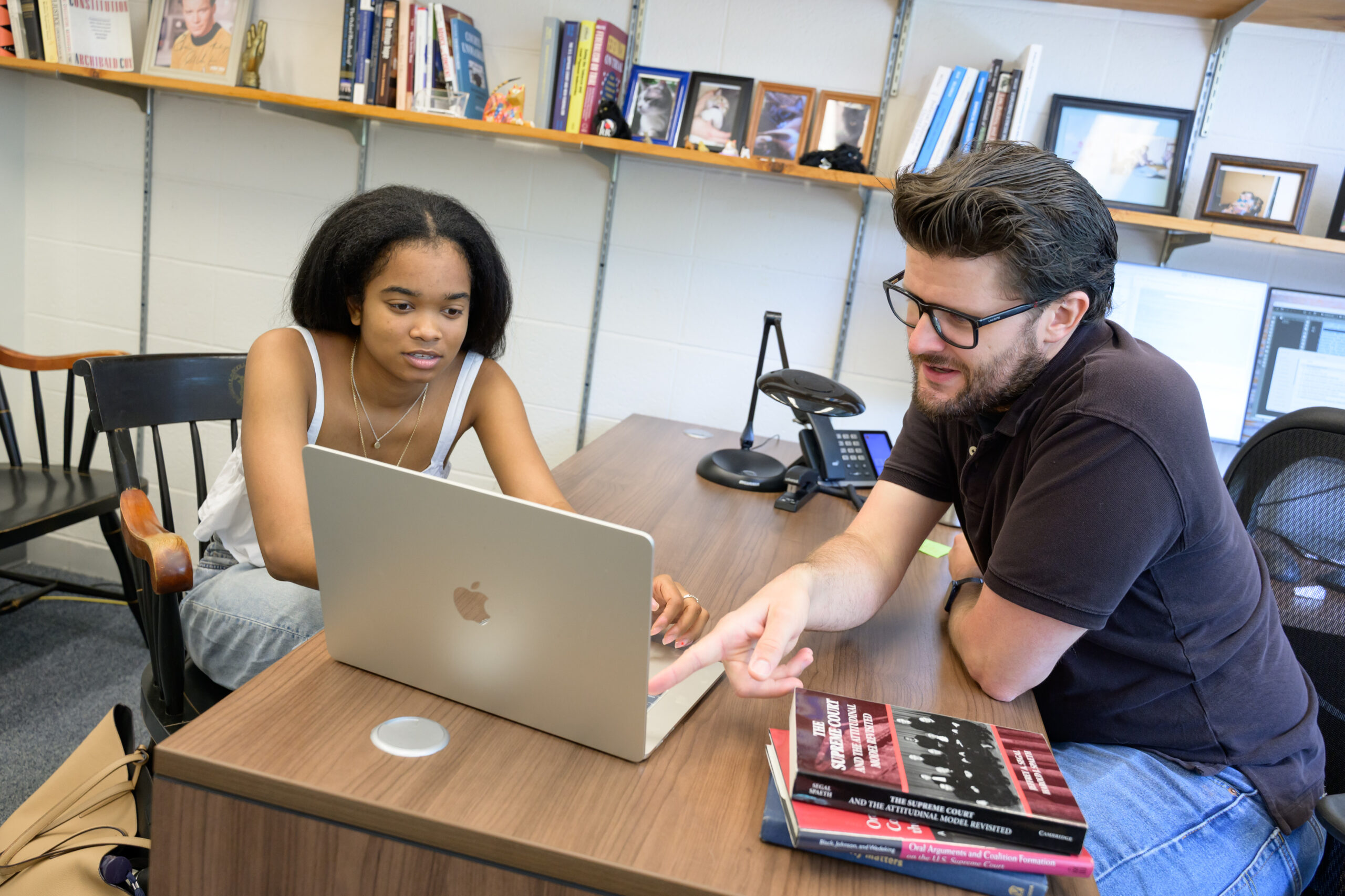
Noelle Hanson ’26 meets with Shane Gleason, associate professor of public policy and law, to talk about her summer research project, which uses AI tools to more accurately transcribe testimony in state supreme courts.
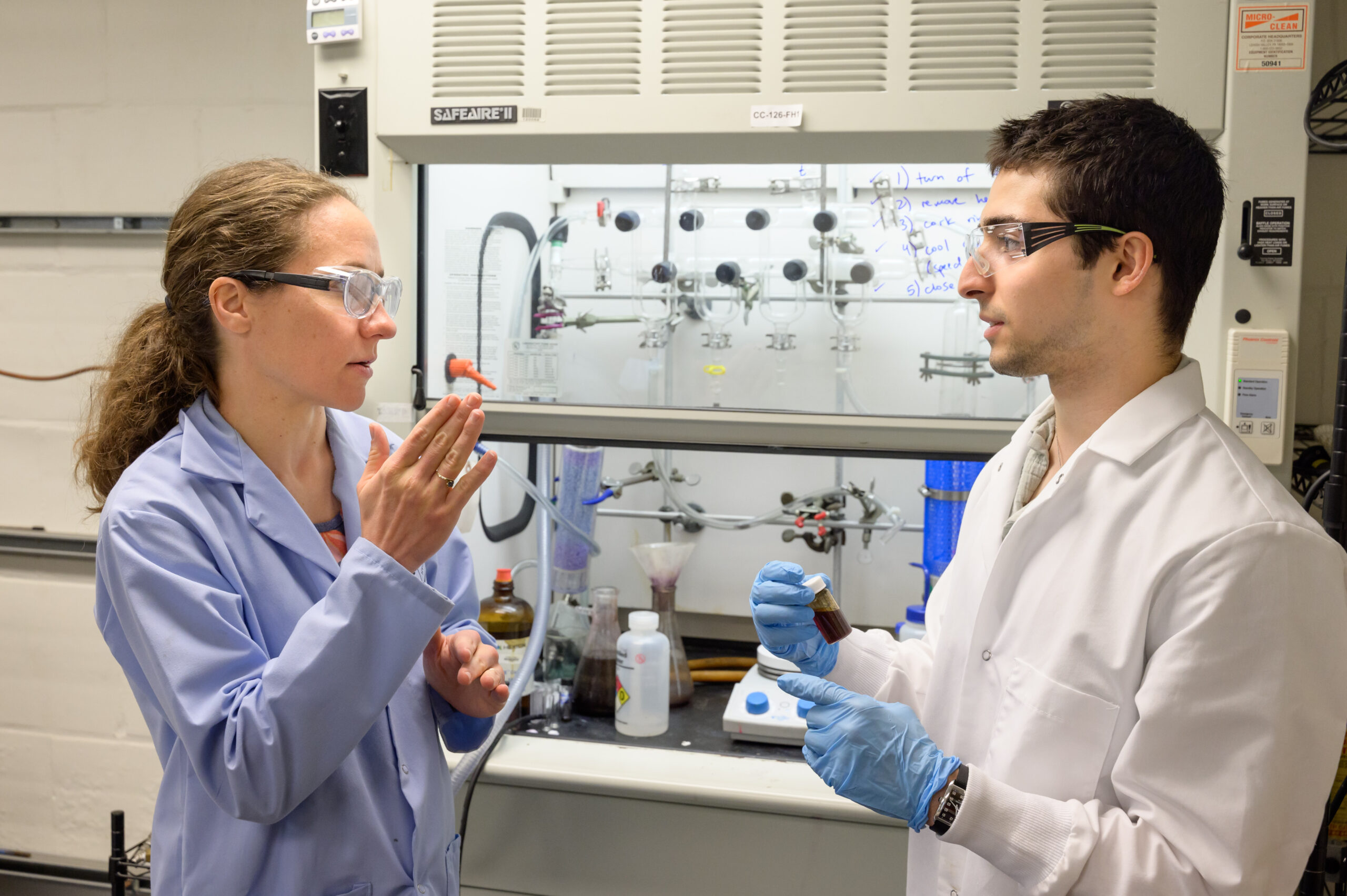
Associate Professor of Chemistry Lindsey Hanson talks with Navid Sohaili Arshadi ’27 about his research in synthesizing nanoparticles made of mixtures of gold and iron to understand how such particles form, and to use them as sensors.
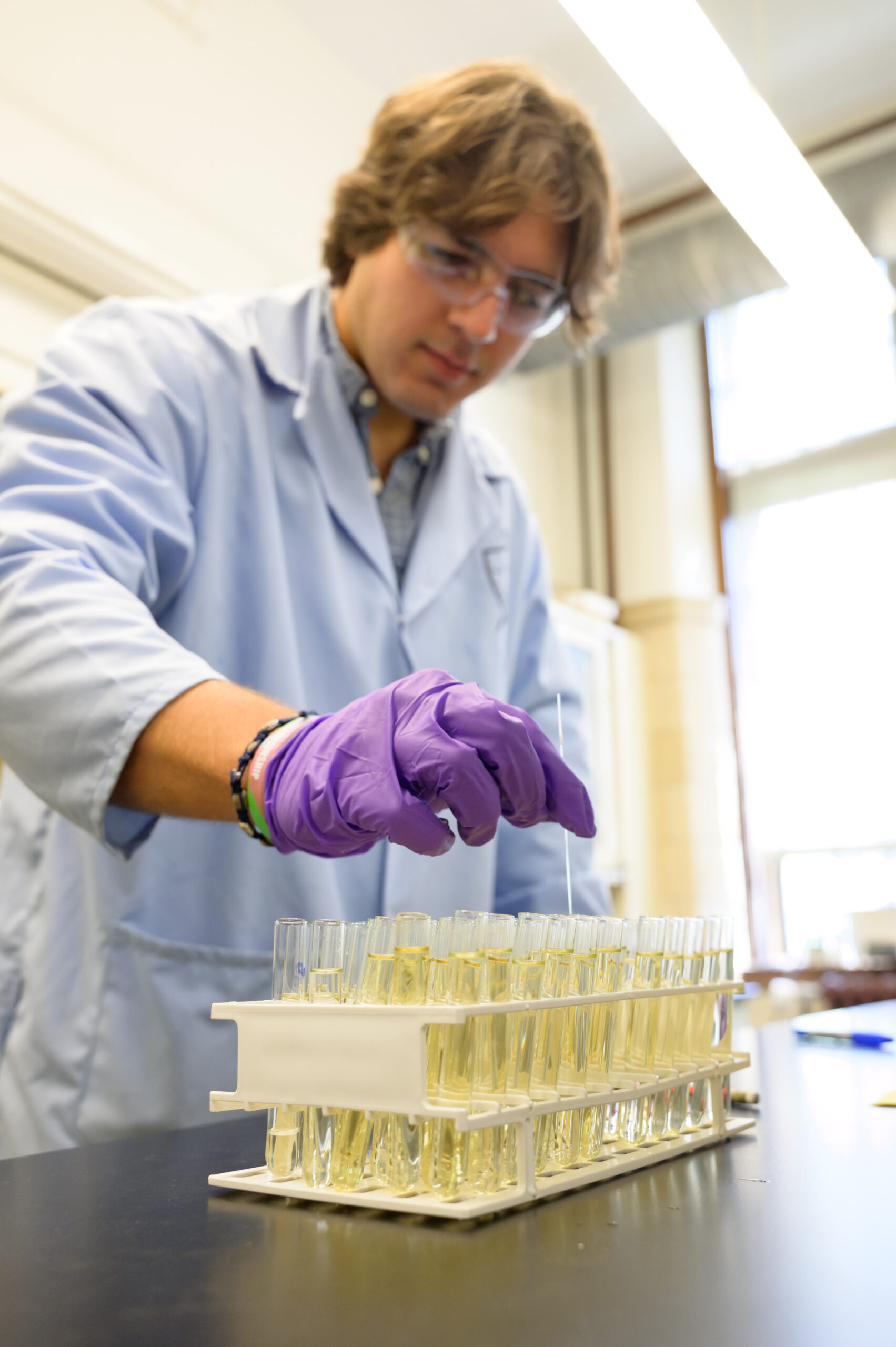
Francisco Bertolotti Badala ’26 works on his research project “Synthesis and Evaluation of an Organometallic Models for Beta-Sheets.” His work with Vernon K. Krieble Professor of Chemistry Timothy Curran in creating models of the beta-sheet structures that proteins form could give insight into diseases like Alzheimer’s.
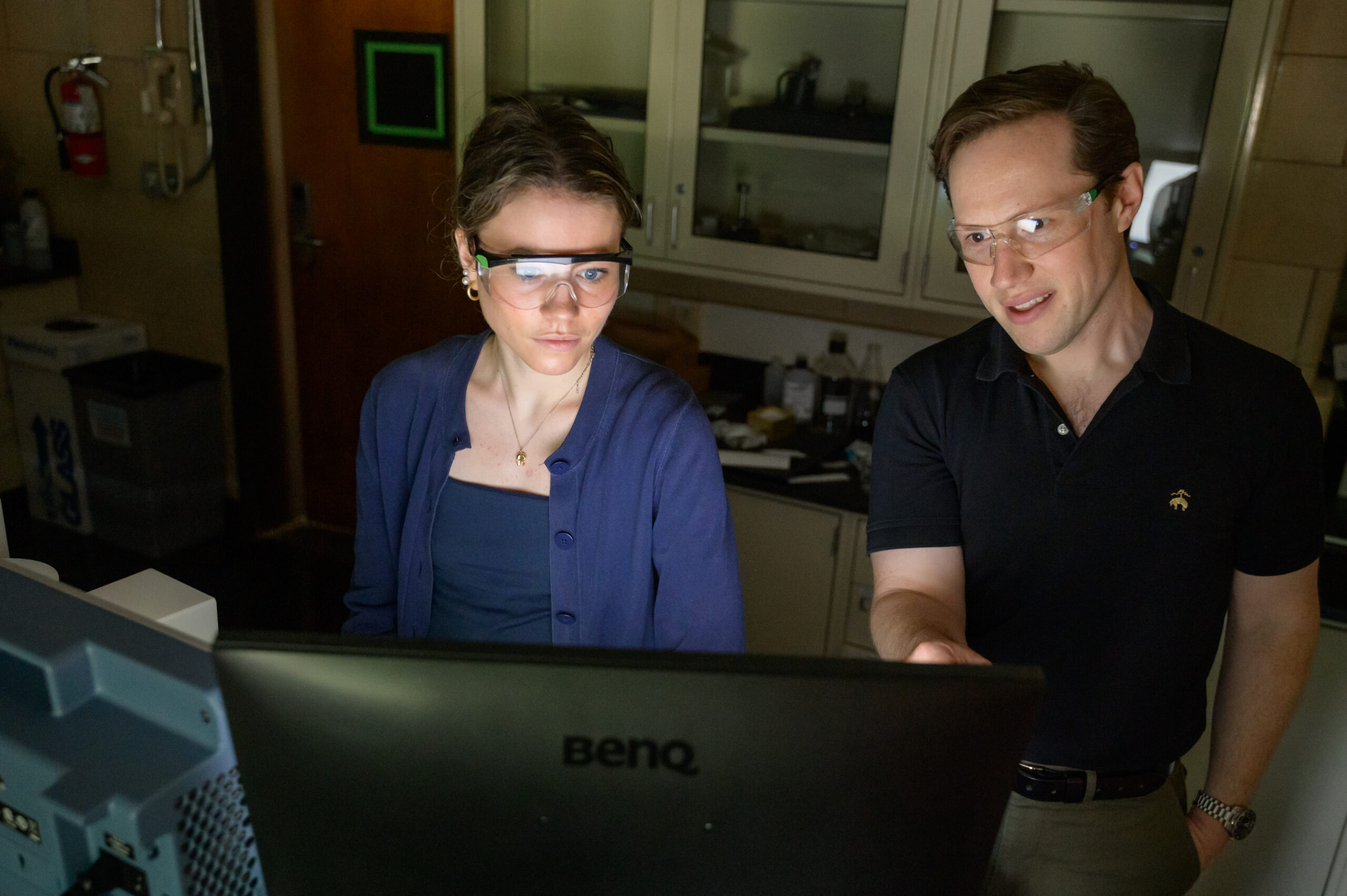
Paige Jaenicke ’27 works with Associate Professor of Chemistry Adam Hill ’08 on a laser spectroscopy experiment as part of her summer research project. The laser simulates the effect of sunlight on renewable energy materials, measuring how quickly energy from sunlight can be used to convert carbon dioxide into fuel.
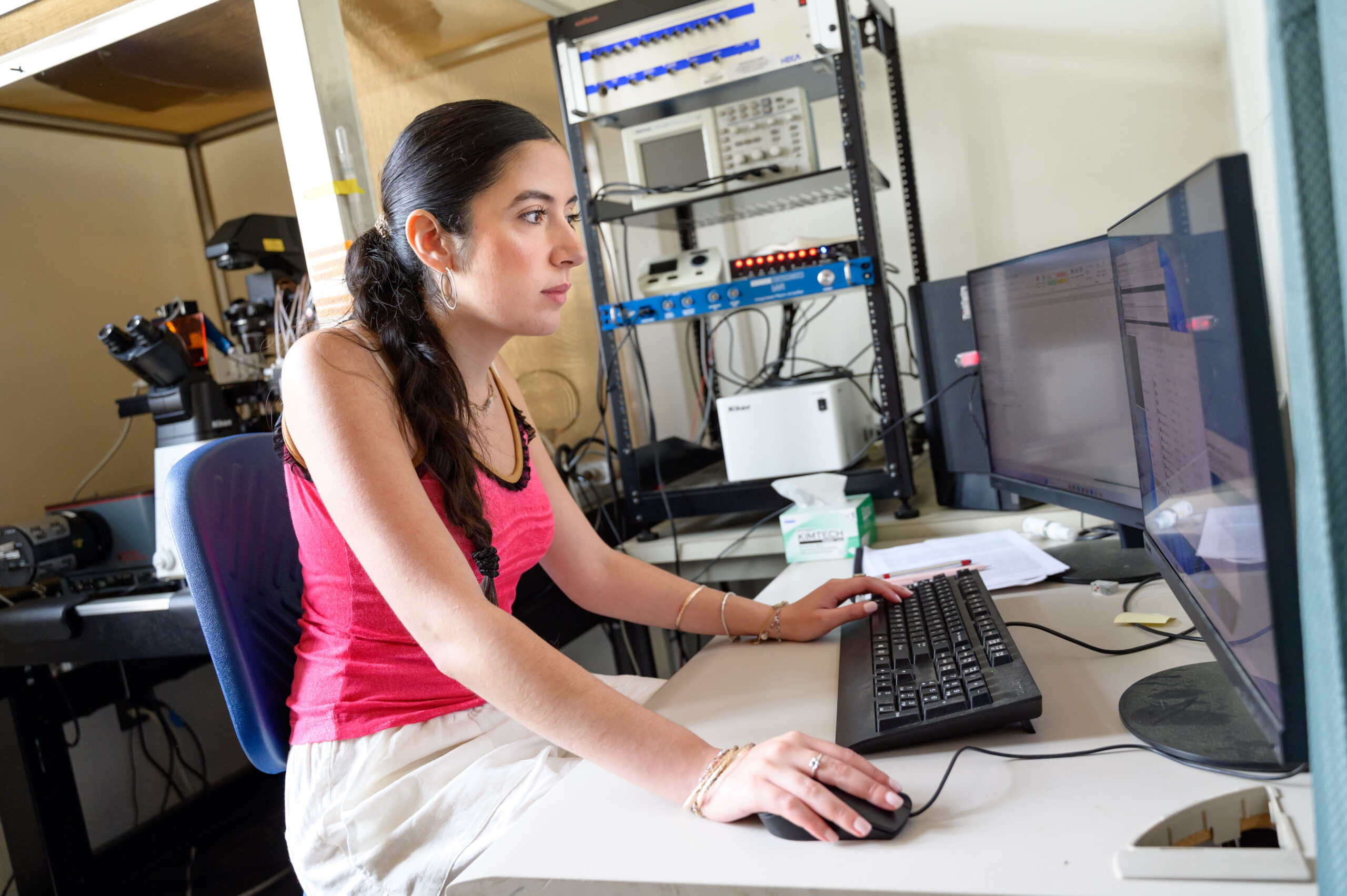
Stella Garson ’26 examines data collected with her research project partner, Malia Ruggiero ’27. Their research project with Assistant Professor of Neuroscience and Chemistry Michael Puljung, “Examining Channel Motility Using Fluorescence Resonance Energy Transfer,” looks at the transfer of nutrients and proteins across cell membranes.
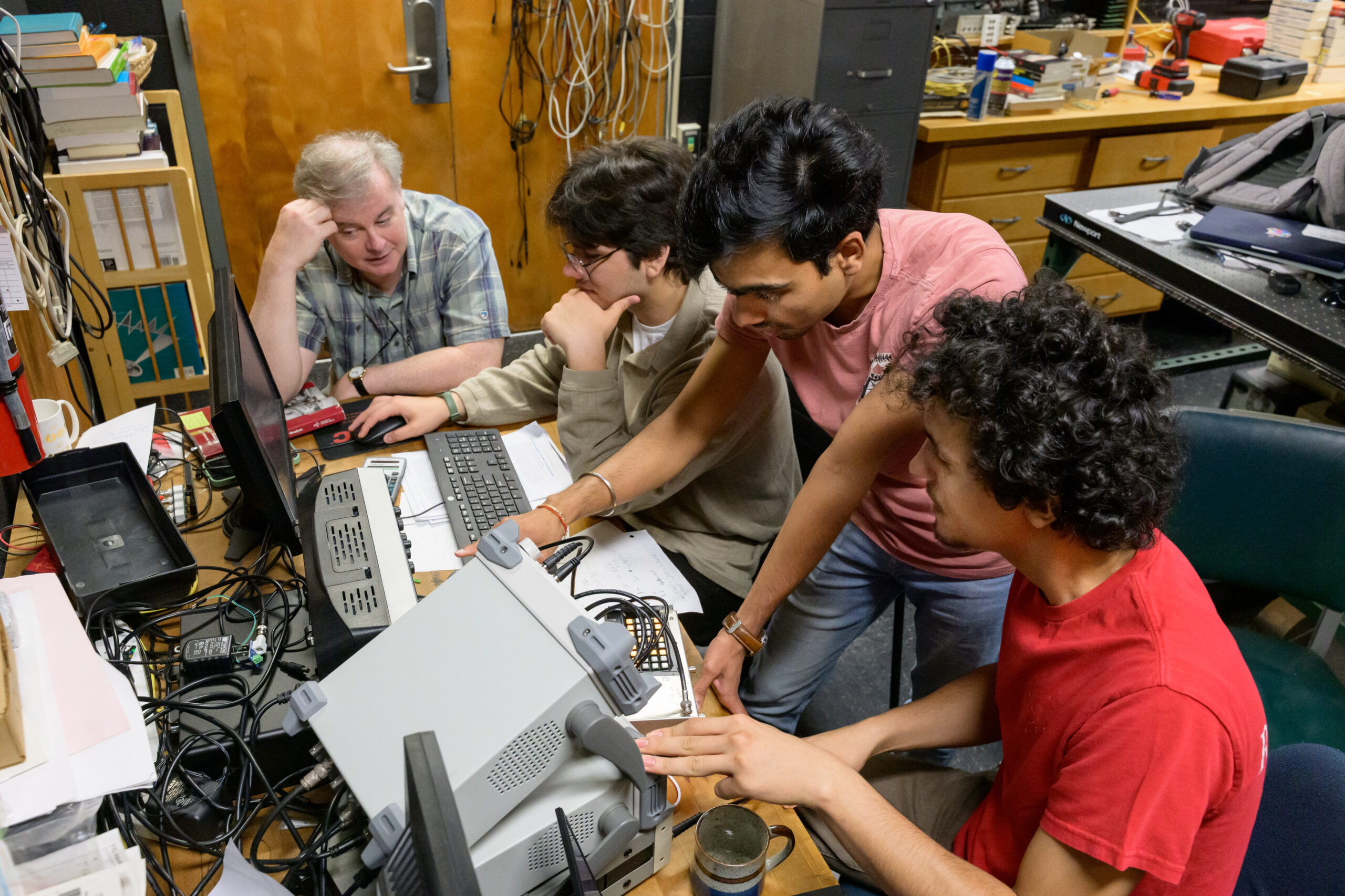
Students (right to left) Fadhil Ahmed ’26, Sayrabh Tiwari ’25, and Liu Restrepo ’27 work with Associate Professor of Physics David Branning on the development of an affordable and efficient field-programmable gate array, a normally expensive device used to accurately detect quantum particles.
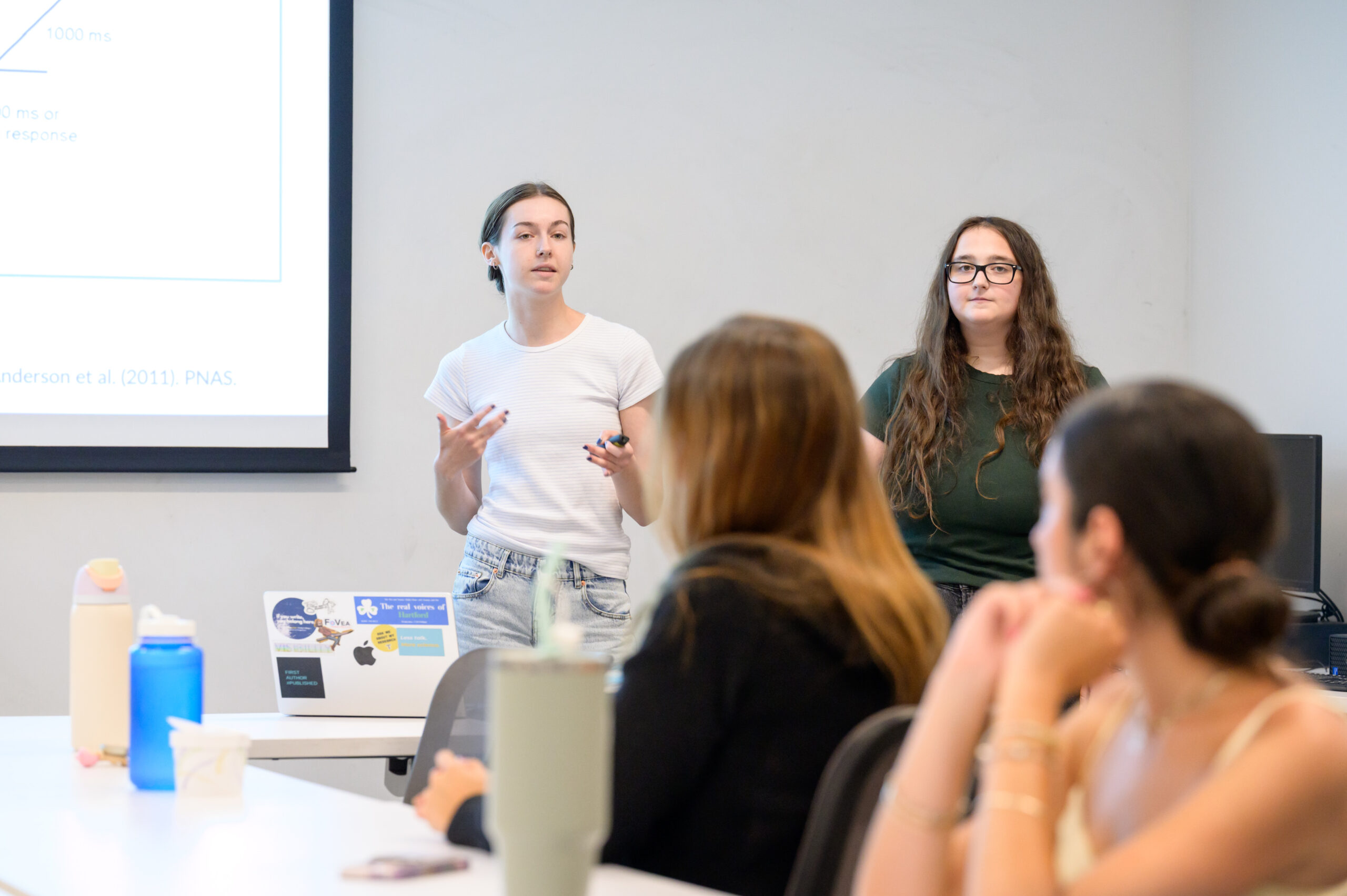
Alenka Doyle ’26 (left) and Emily Gonzales ’26 (right) present an update on their summer research project in psychology focusing on visual cues and attention disorders. They conducted research this summer with Associate Professor of Psychology Michael Grubb.
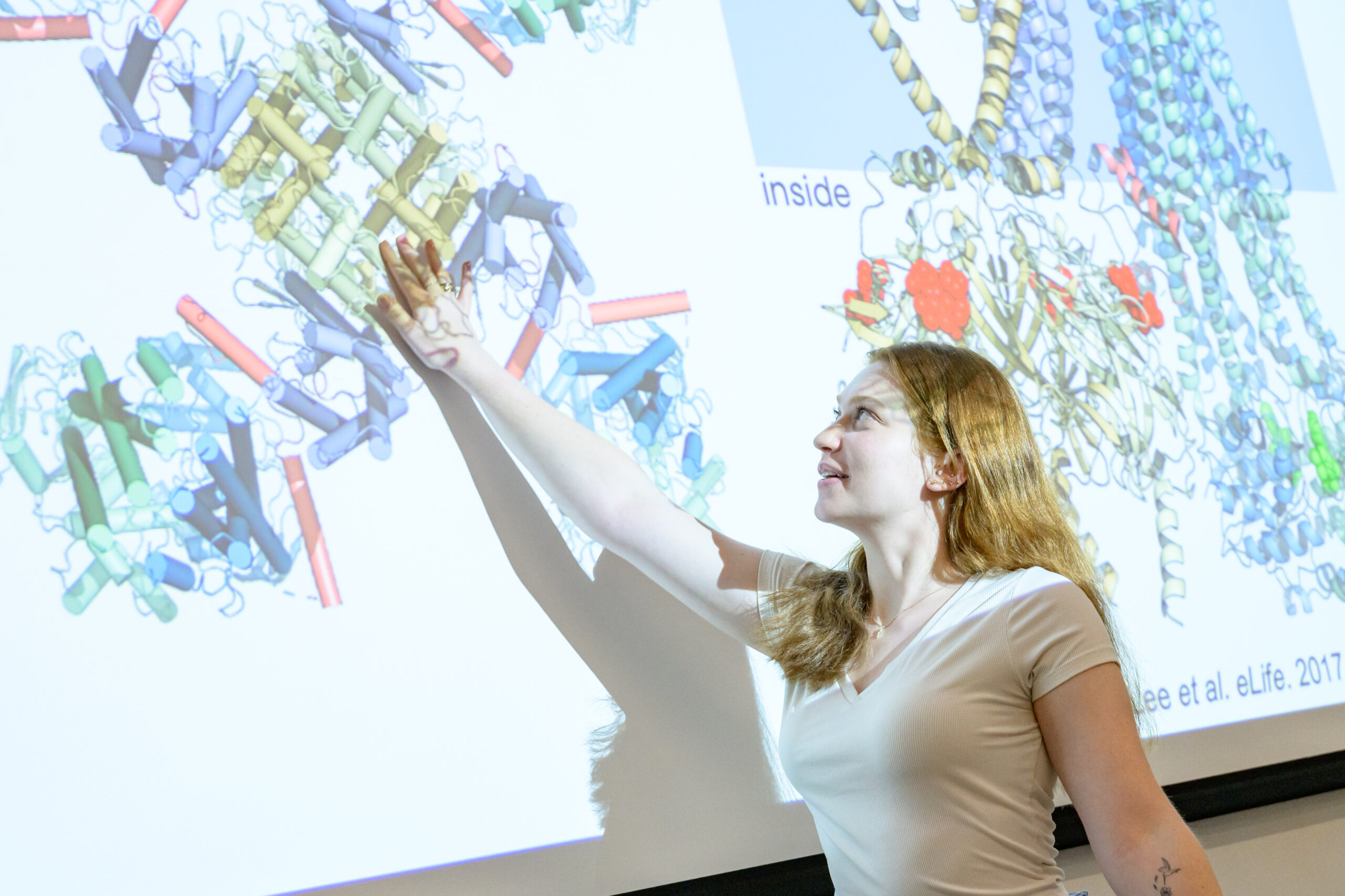
Malia Ruggiero ’27 presents an update on her summer research project examining channel motility using Flourescence Resonance Energy Transfer (FRET).
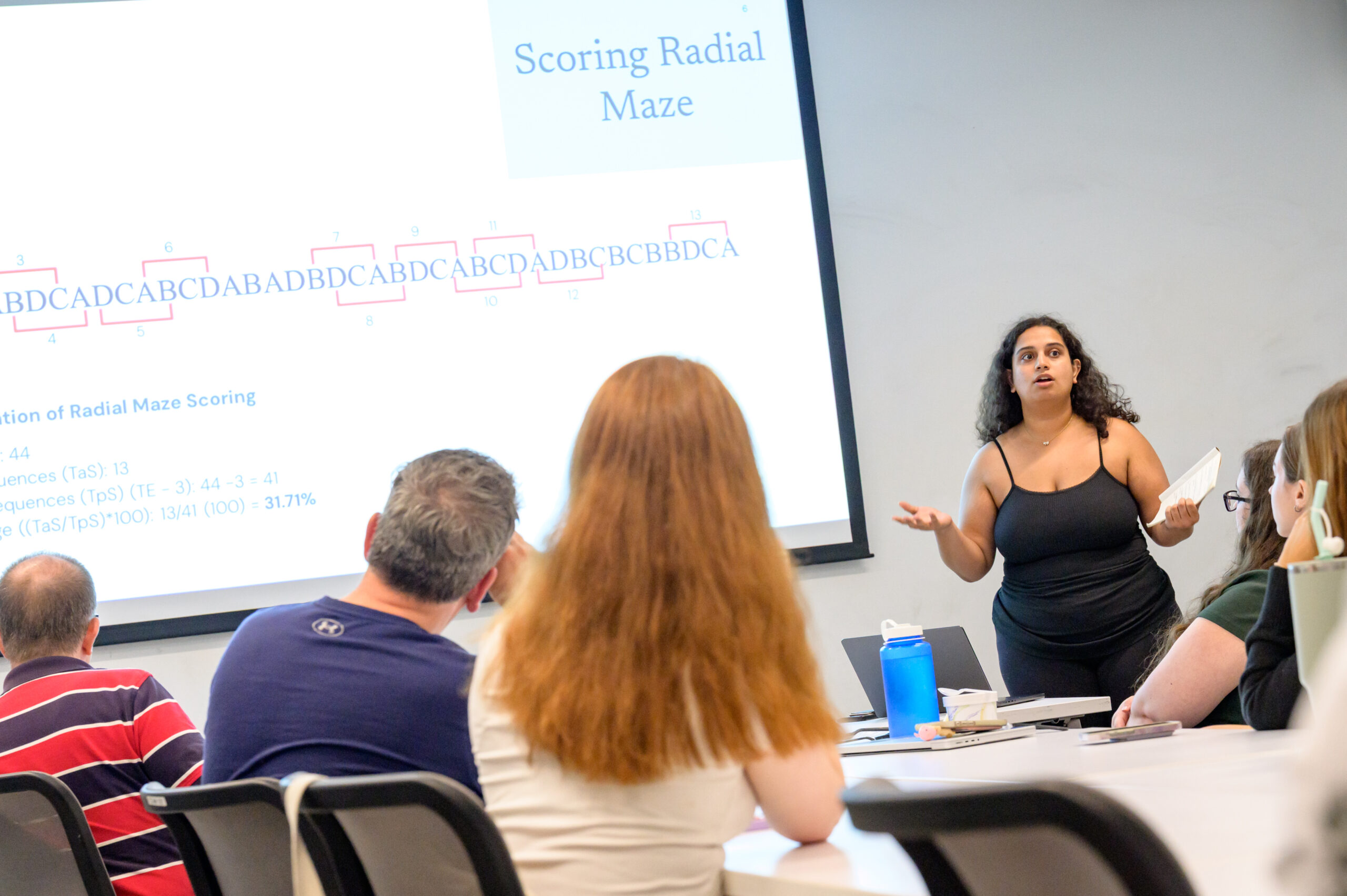
Sanaa Pradhan ’26 presents an update on her summer project with Research Associate Professor David Ruskin on adenosine-induced modifications of mouse behavior.
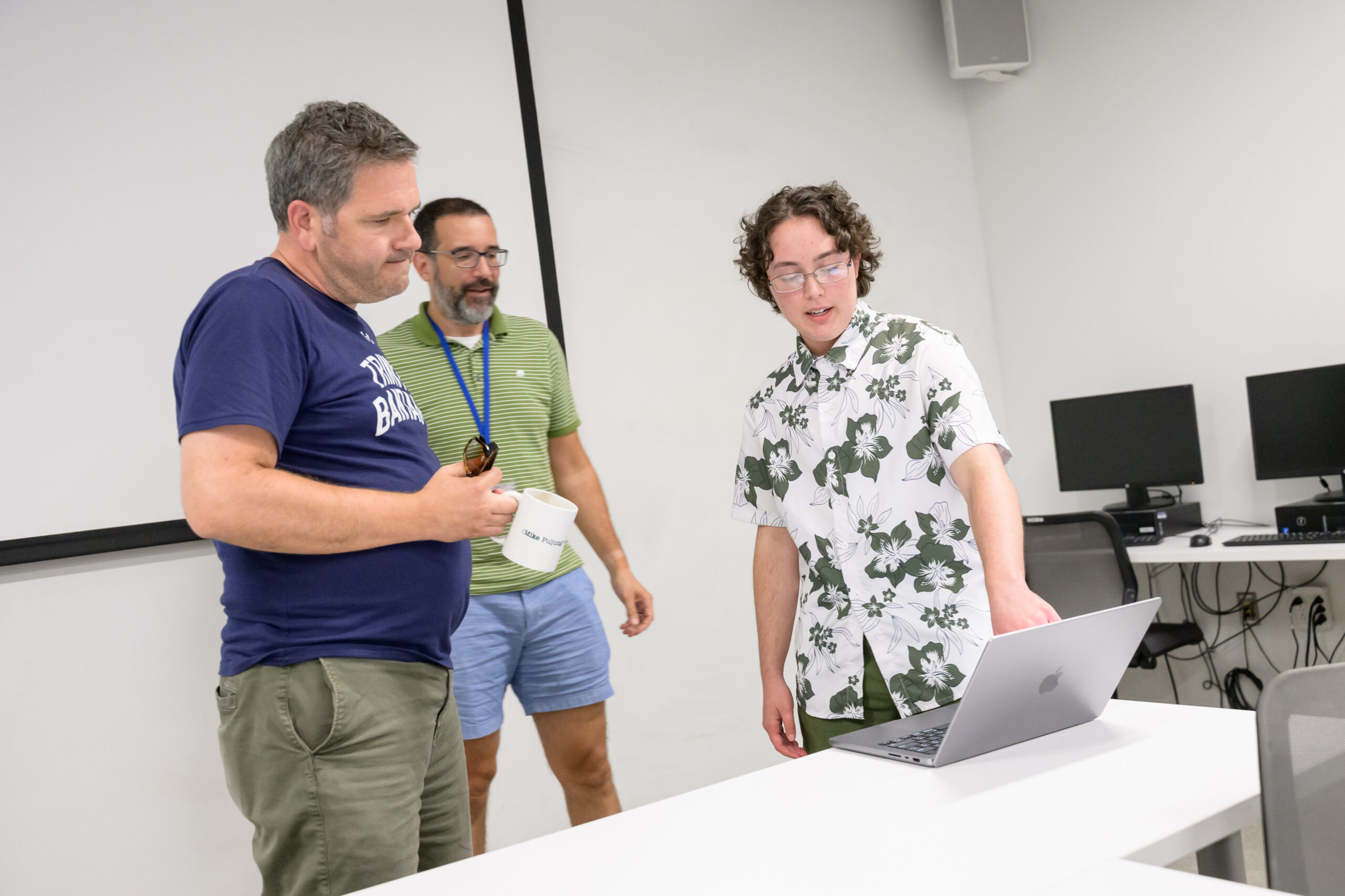
Spencer Rooney ’27 (right) talks with Assistant Professor of Neuroscience and Chemistry Michael Puljung (left) and Associate Professor of Neuroscience Luis Martinez about his summer research project examining how mice with the rodent equivalent of ADHD respond to cocaine.
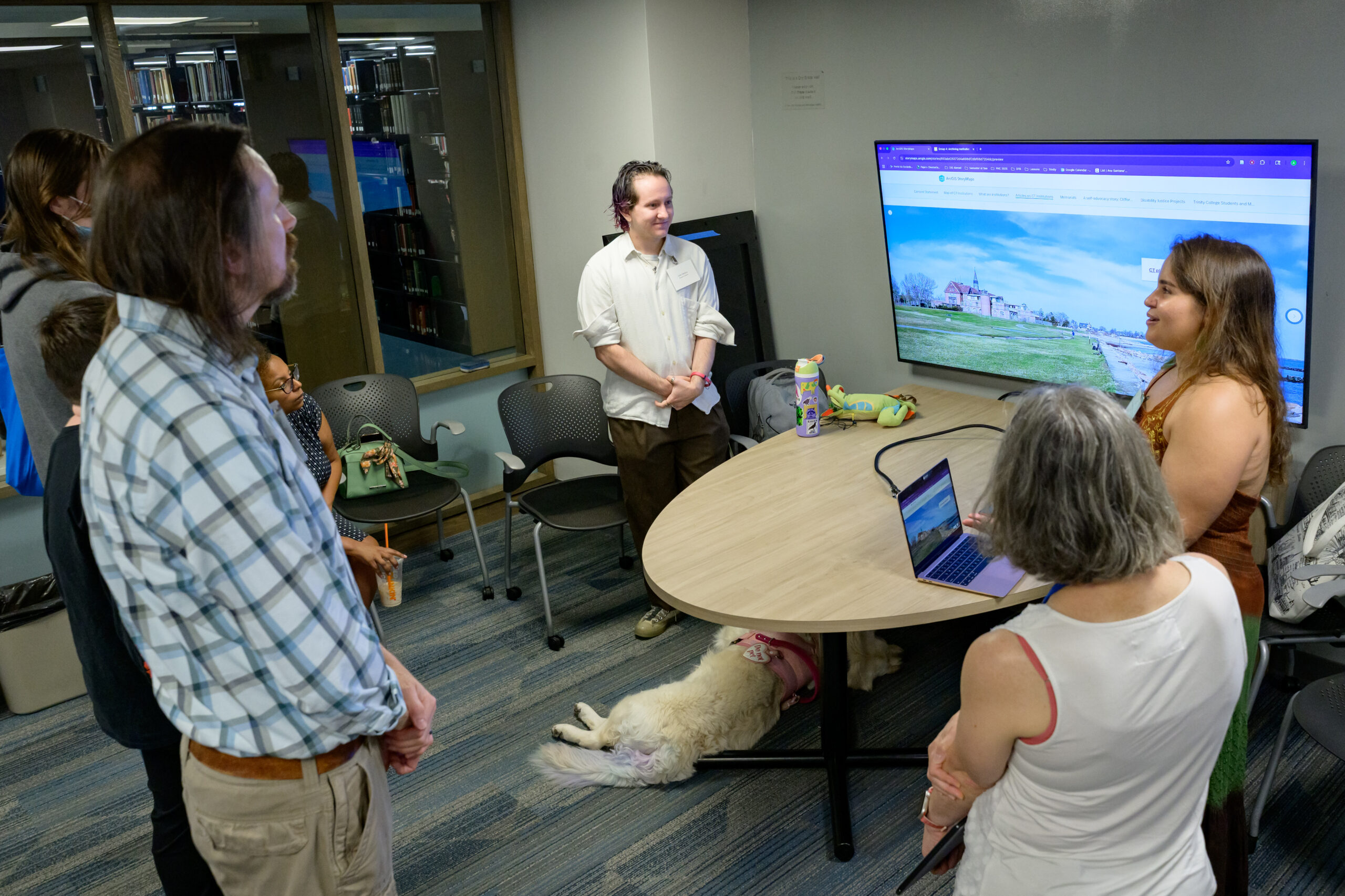
Leon Dell’Era ’27 (left) and Ana Gomes dos Santos ’26 present their summer research project on the institutionalization of Black autistic people in Connecticut. Their work was part of a Public Humanities Collaborative project with Diana Paulin, Associate Professor of English and American Studies, and Ashten Vassar-Cain and Jess Petrazzuoli-Gallagher of the Mansfield Training School Memorial Project.
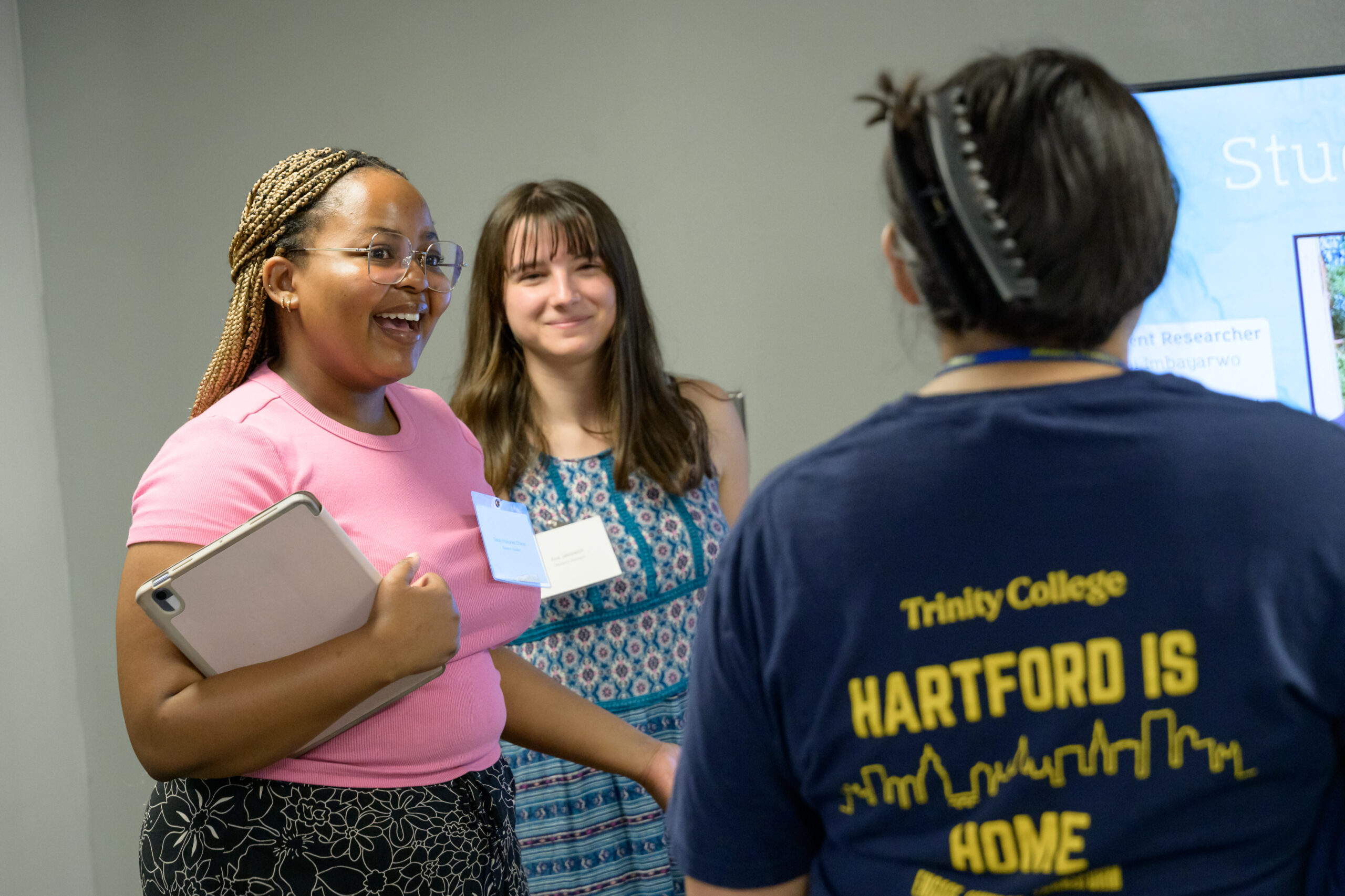
Sekai Imbayarwo Chikosi ’27 (left) and Ava Jaslowich ’27 present their Public Humanities Collaborative research project on the cultural history of wine in Connecticut. They worked this summer with Professor of History Jennifer Regan-Lefebvre and TR Revella-Hamilton, the director of preservation and collections at the Webb Deane Stevens Museum.
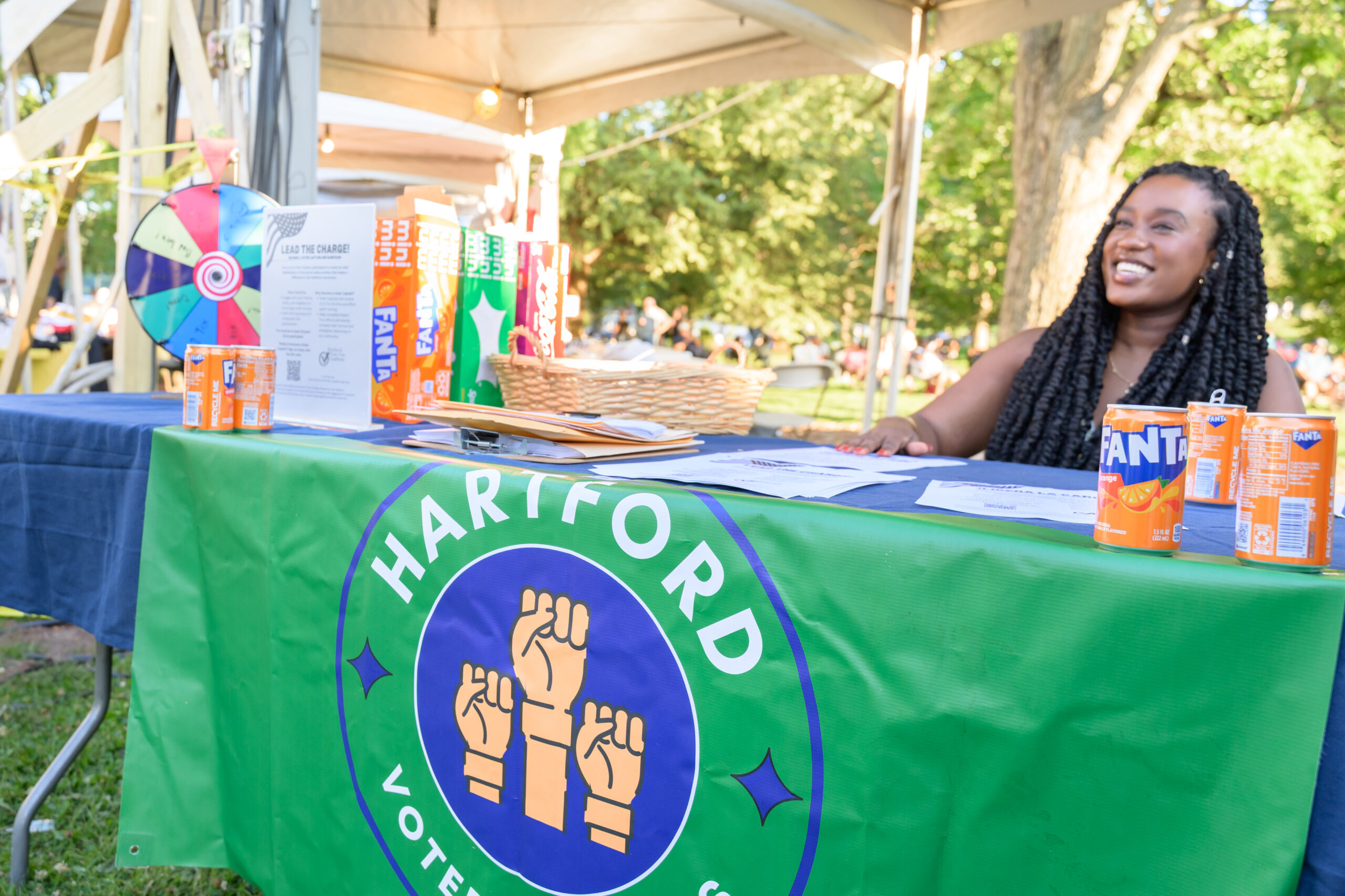
Lyane Ishimwe ’27 engages with attendees of the Greater Hartford Festival of Jazz at Bushnell Park as part of the Voter Captains Project, an effort to boost community engagement and mobilization in an off-cycle election year led by Assistant Professor of Political Science Dang Do.
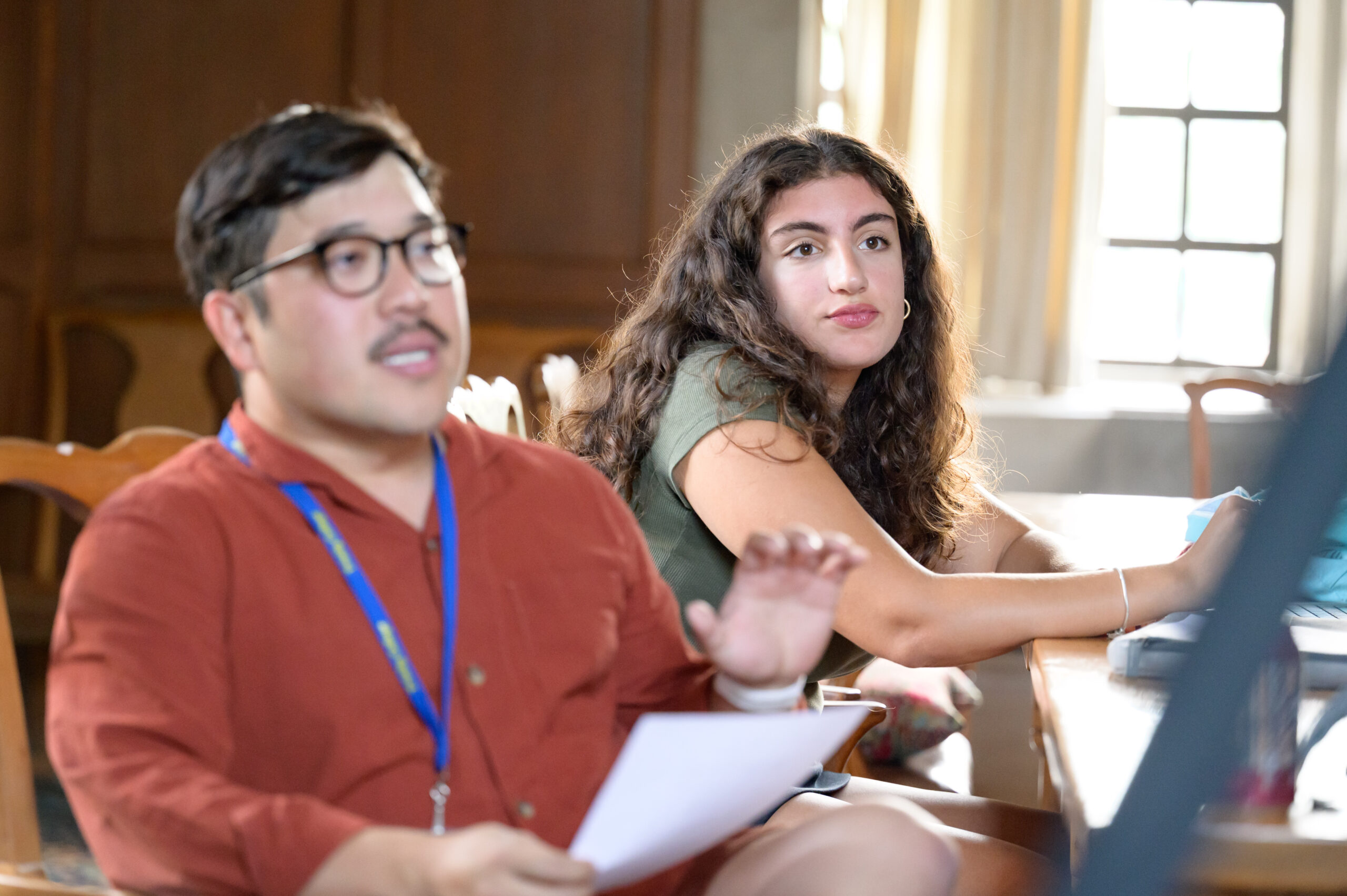
Antonia Kambolis ’26 (right) meets with Assistant Professor of Political Science Dang Do and Lyane Ishimwe ’27 (not pictured) to review their work on the Voter Captains Project, an effort to boost community engagement and mobilization in an off-cycle election year.
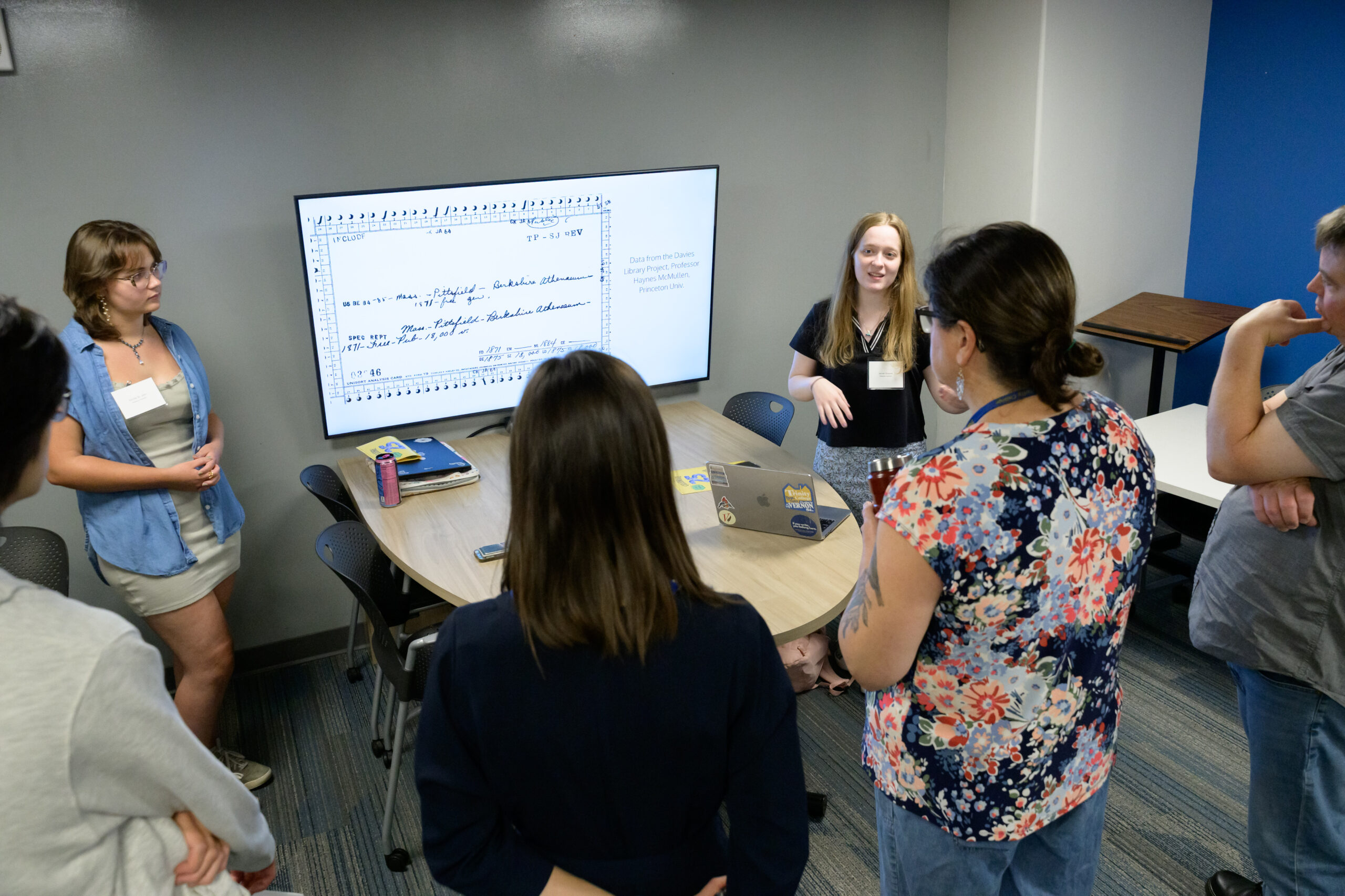
Emma St. John ’28 (left) and Jennah Simpson ’27 present their summer research project on public libraries during Reconstruction. They worked this summer with Christopher Hager, Hobart Professor of the Humanities and Professor of English, and Maureen Heher, historical research specialist at the Hartford History Center at Hartford Public Library.
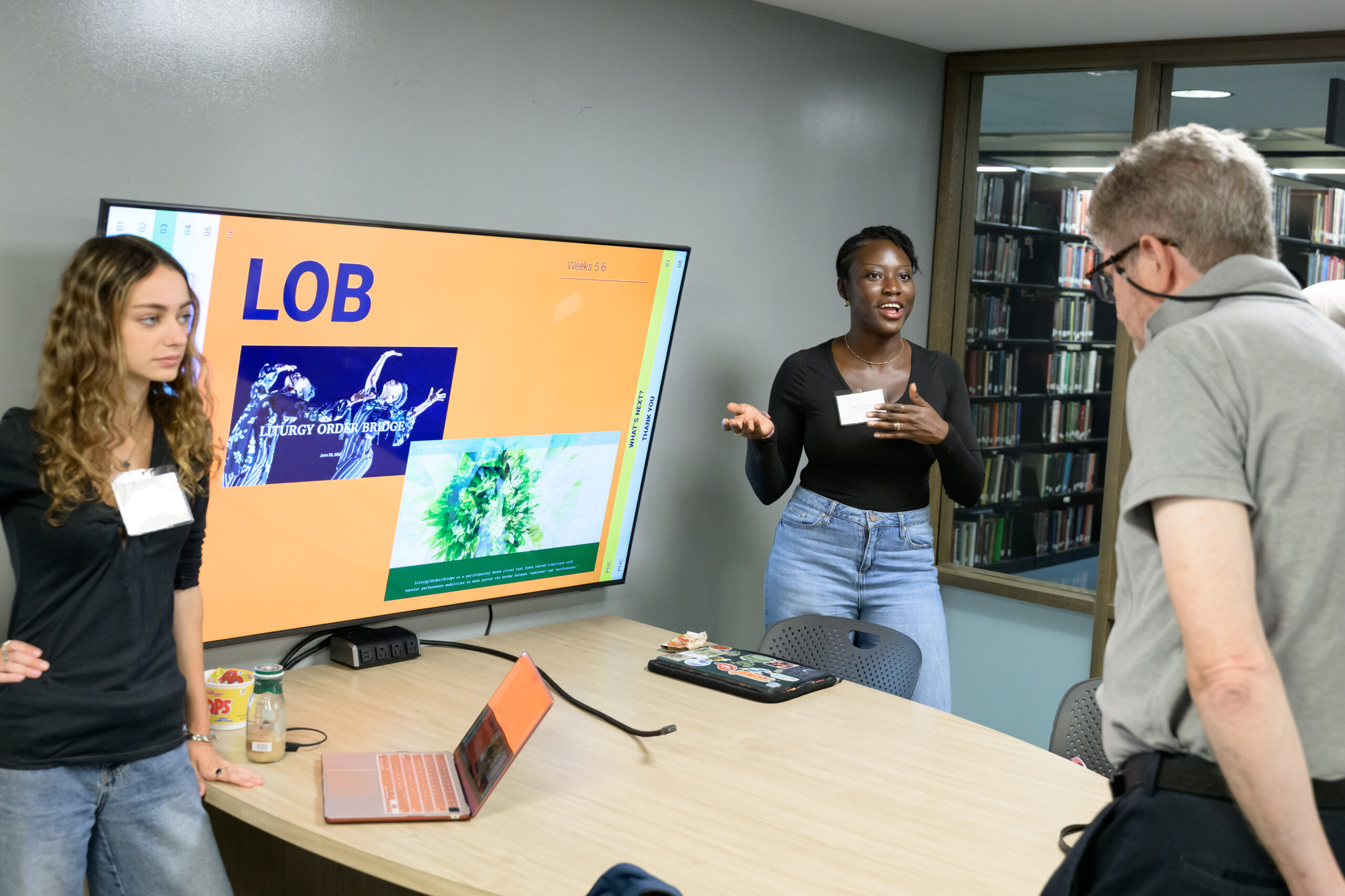
Talia Cutler ’27 (left) and Olaide Ogunshote ’26 present their project on archiving artists’ stories from the Austin Arts Center. They worked this summer with Deborah Goffe, executive director of the Austin Arts Center and artist-in-residence in theater and dance, and Rebecca Pappas, associate professor of theater and dance.
